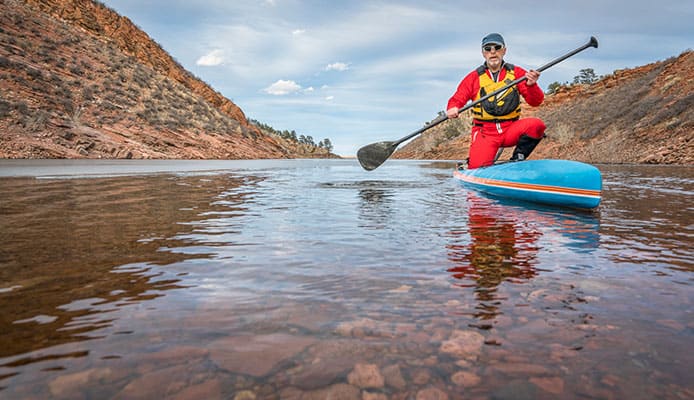
If you enjoy cold water activities, you probably own or consider buying a drysuit. What many people don’t realize is that often (especially in very cold water), a drysuit won’t keep you warm on it’s own. Sure, it will keep you dry, but you’ll get no proper insulation. For this reason you should get a drysuit undersuit.
Undergarments play a significant role in your overall comfort and warmth underwater. Depending on temperature, as well as your needs and preferences, these come in different styles with varying prices. We selected fantastic products for you to choose from, but to fully grasp the idea be sure to check our buying guide to best drysuit underwear.
Let’s get started.
OUR TOP PICK
ScubaPro Climasphere
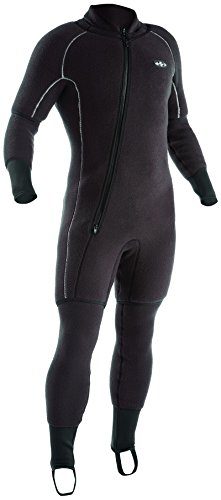
- Stand Out Features - Why We Love It
- Stretch fleece
- Two pieces
- Neoprene cuffs
EDITORS CHOICE
Waterproof Meshtec
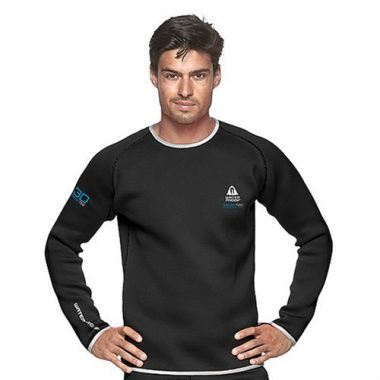
- Stand Out Features - Why We Love It
- Incompressible mesh lining
- No skin abrasion
- Long top
BEST VALUE
SEAC Unifleece
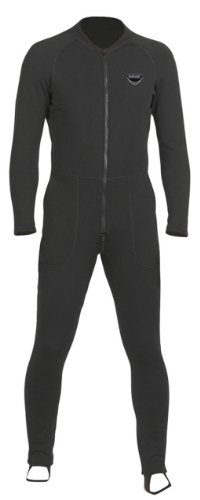
- Stand Out Features - Why We Love It
- Double-ended front zipper
- Pockets
- Many sizes
Waterproof Meshtec Mens
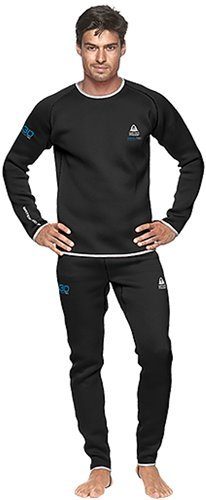
- Stand Out Features - Why We Love It
- Incompressible mesh lining
- Good under any drysuit
- No discomfort while wearing
Aqua Lung MKO
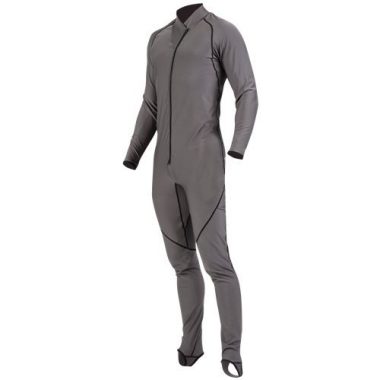
- Stand Out Features - Why We Love It
- Added comfort (spandex and lycra)
- Rear relief flap and two-way torso zipper
- Excellent base layer
Diving Unlimited International Actionwear

- Stand Out Features - Why We Love It
- Comes with booties
- Side pockets
- Soft velour lining
Hollis 100gm Men’s
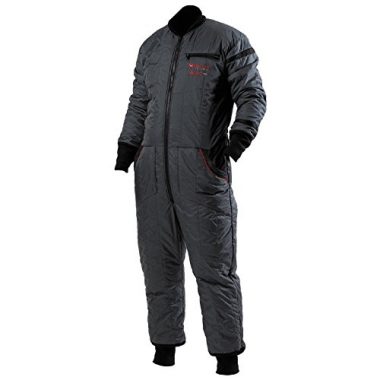
- Stand Out Features - Why We Love It
- Neoprene cuffs
- Wind resistance
- Excellent quality
Sharkskin Men’s Chillproof With Front Zip
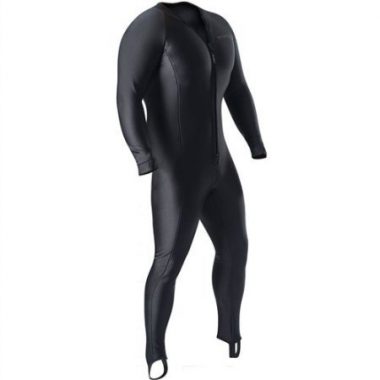
- Stand Out Features - Why We Love It
- Available in very large sizes
- Warm even when wet
- Anti-microbial properties
Body Glove Mens
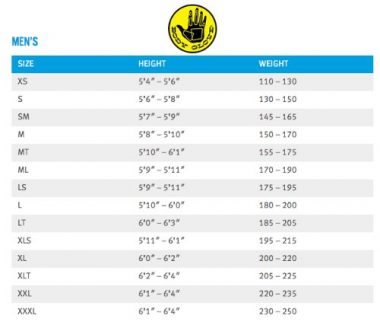
- Stand Out Features - Why We Love It
- Water repellent
- Flatlock seams
- Anatomic cut for better fit
Bare CT200 Polarwear Men Thermal
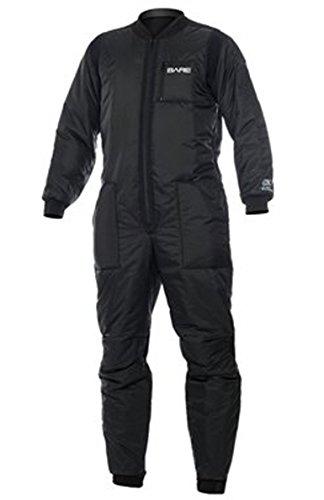
- Stand Out Features - Why We Love It
- Three insulation layers
- Stretch panels for easier movement
- Internal suspenders
- Neoprene cuffs
How To Choose A Drysuit Undergarment – Buying Guide
Several things are important when choosing clothing you’ll wear under your drysuit. Main point of having undergarments is to be warm underwater, so pay attention to the type of product you’re getting and whether it’s compatible with the conditions where you’ll be diving in. Take a closer look.
Warmth
This mostly depends on the material and design of the diving undersuit. Some will have better insulation than others, so be sure to check these ratings. Also, undergarment needs to stay dry even if it gets a little we by accident. Leaks are something that often happens in drysuits, but you mustn’t feel cold even if some water comes through.
Another important thing is the moisture wicking. This refers to eliminating moisture away from your body, sweat in the first place. Most products have this, but the efficiency is not the same. However, this greatly increases the comfort you have while wearing it, and prevents the nasty wet and sticky feel on your skin.
Several other things contribute to warm undergarments. It helps if the design includes a high neckline, insulation under the zippers, as well as strategically placed panels. Also, thumb and foot loops keep the undergarment in place, while elastic cuffs can prevent heat from being lost.
Layering
This is needed if you’re diving in very cold waters. You can wear a base layer closest to your skin, and then another undergarment on top. You can add a vest or a top to gain even more warmth. Additions like dive gloves or hoods are sometimes very useful too. Keep in mind however that layering can make the undergarment bulky and make your movement and buoyancy control difficult.
Design and Fit
You have different choices available to make the undergarments most practical for you. Most often they are made from one piece – like a jumpsuit. This is a warmer option, and most people prefer it. The alternative is separate top and bottom, which can be sold together or separately.
This is a more versatile option, because you can wear these on their own. There are vests available too, if you want to heat only the core of your body. A step up are heated undergarments, which have battery powered coils to keep you warm.
Design includes some additions, like the mentioned thumb and foot loops. This is to make sure the undergarment stays in position, because it can be very uncomfortable if sleeves or legs roll up while you’re putting on your drysuit. Stretch panels can also be a useful addition, under the arms for example or in the crotch area. These allow better movement while you’re wearing the undersuit, enabling proper kicks. Design should also allow hosing for the P-valve (a system which allows divers to urinate, and collects it while keeping you dry).
When it comes to fit, you should always look for go for something comfortable – neither too tight nor too loose. Buying the wrong size can impair your movements, which is very counterproductive. It doesn’t matter whether the drysuit on top fits perfectly, if the underwear doesn’t you’ll have trouble.
Material
Different materials are used to cover all these requirements we mentioned so far. Many undergarments will offer a combination of materials to get the best result. As we pointed out, it must remain as dry as possible and wick away moisture. At the same time, it must keep your body insulated and warm, not losing it’s properties when compressed under water.
One of the materials used for undergarments is fleece. You probably have it on your other clothing so you know it feels really soft. It’s a great lining, especially for a base layer because it’s efficient at wicking moisture. An alternative is wool which is a heavier material with similar properties. It’s warmer and better for colder waters.
We mentioned compression can be a problem. Some suits are made from incompressible materials, like Thinsulate for example. This synthetic material is already compressed, and gives you excellent insulation while not adding bulk. Also, you won’t have excess air in your suit, so your buoyancy won’t be affected. Nylon and spandex are also sometimes added to improve the features of a particular undergarment.
You might also like:
Use
Undergarments should be used whenever you feel the water temperature is too cold for just the drysuit. Count in the time factor too, because you’ll be gradually losing heat in time, if you don’t have added insulation. Depending on the circumstances of your dive as well as time you’ll be spending underwater, undergarment thickness should match. They will usually specify the recommended use for the product, so you’ll know what to look for. If you aren’t able to find one, some manufacturers offer custom undergarments. However, these can be significantly more expensive.
FAQs
Q: Why Do I Need Drysuit Undergarments?
Q: What Is The Difference Between Regular And Drysuit Undergarments?
Q: How Do I Clean My Drysuit Undergarments?
Globo Surf Overview
As you have seen, adding undergarments under your drysuit can really be useful. You will be protected and avoid an otherwise unpleasant situation. Like we’ve said, think about the conditions and when you find the type, size it up properly. Only this way will you have the best drysuit undergarment which will completely satisfy you next time you venture underwater.
More Kayak Gear Reviews:



